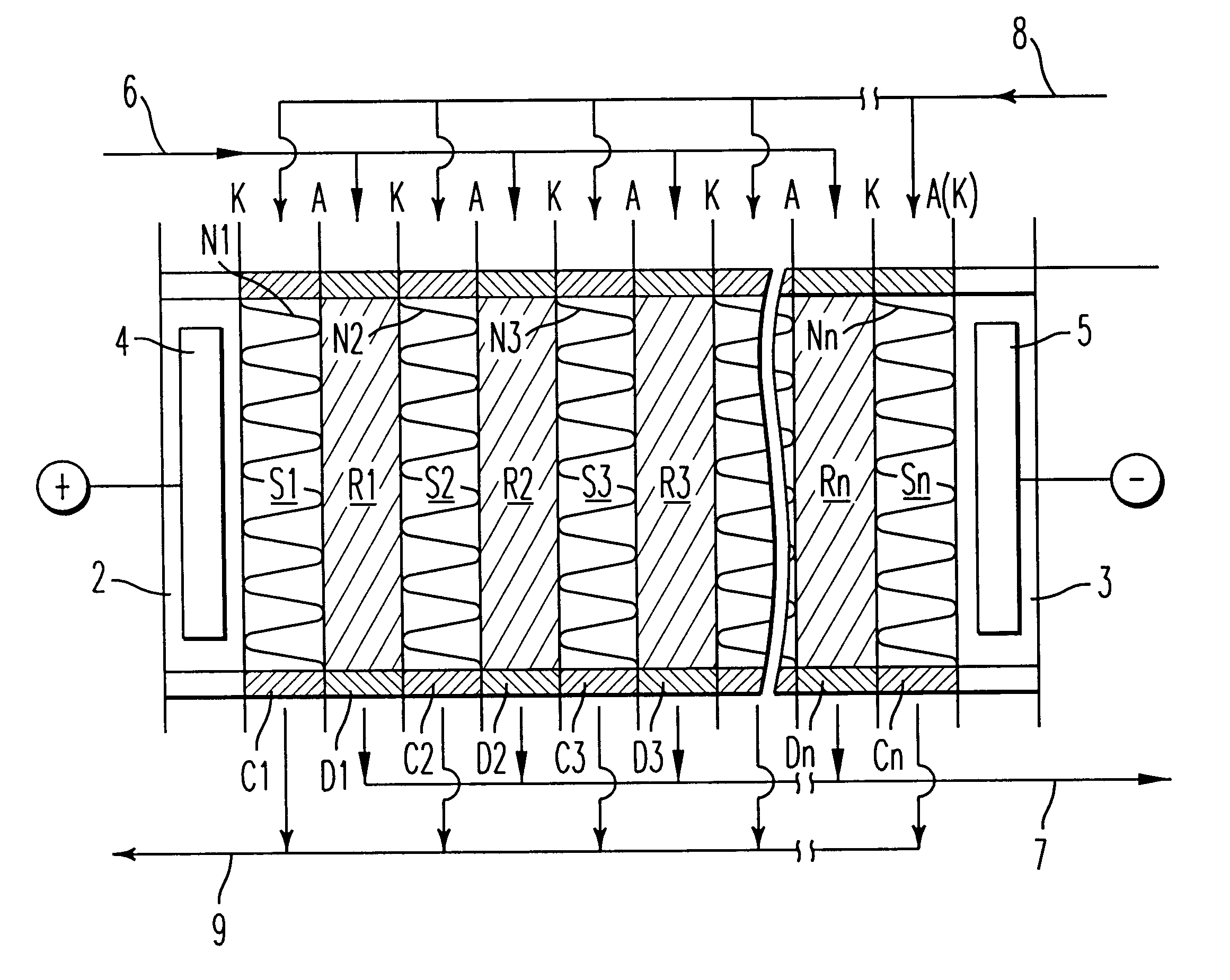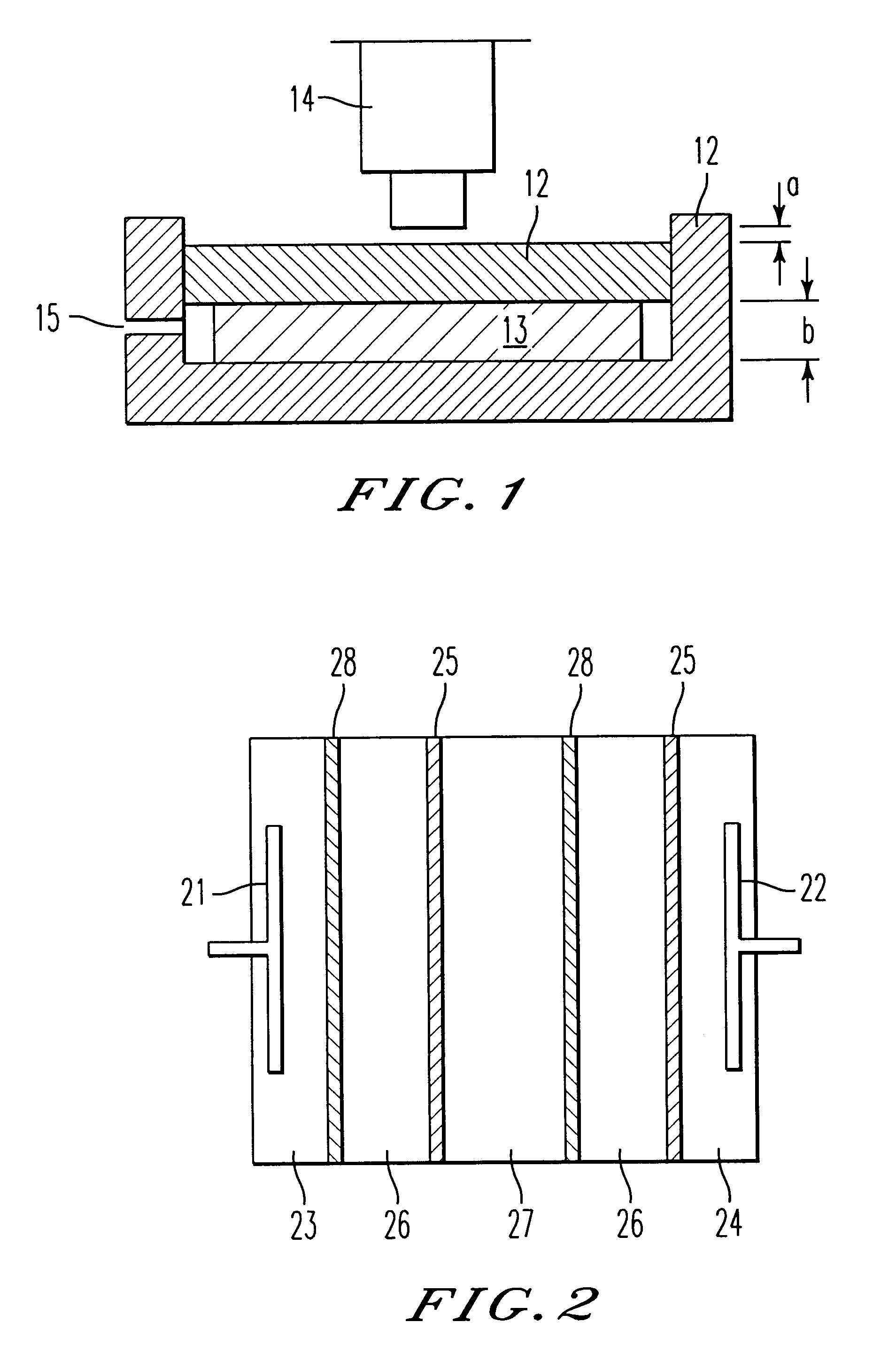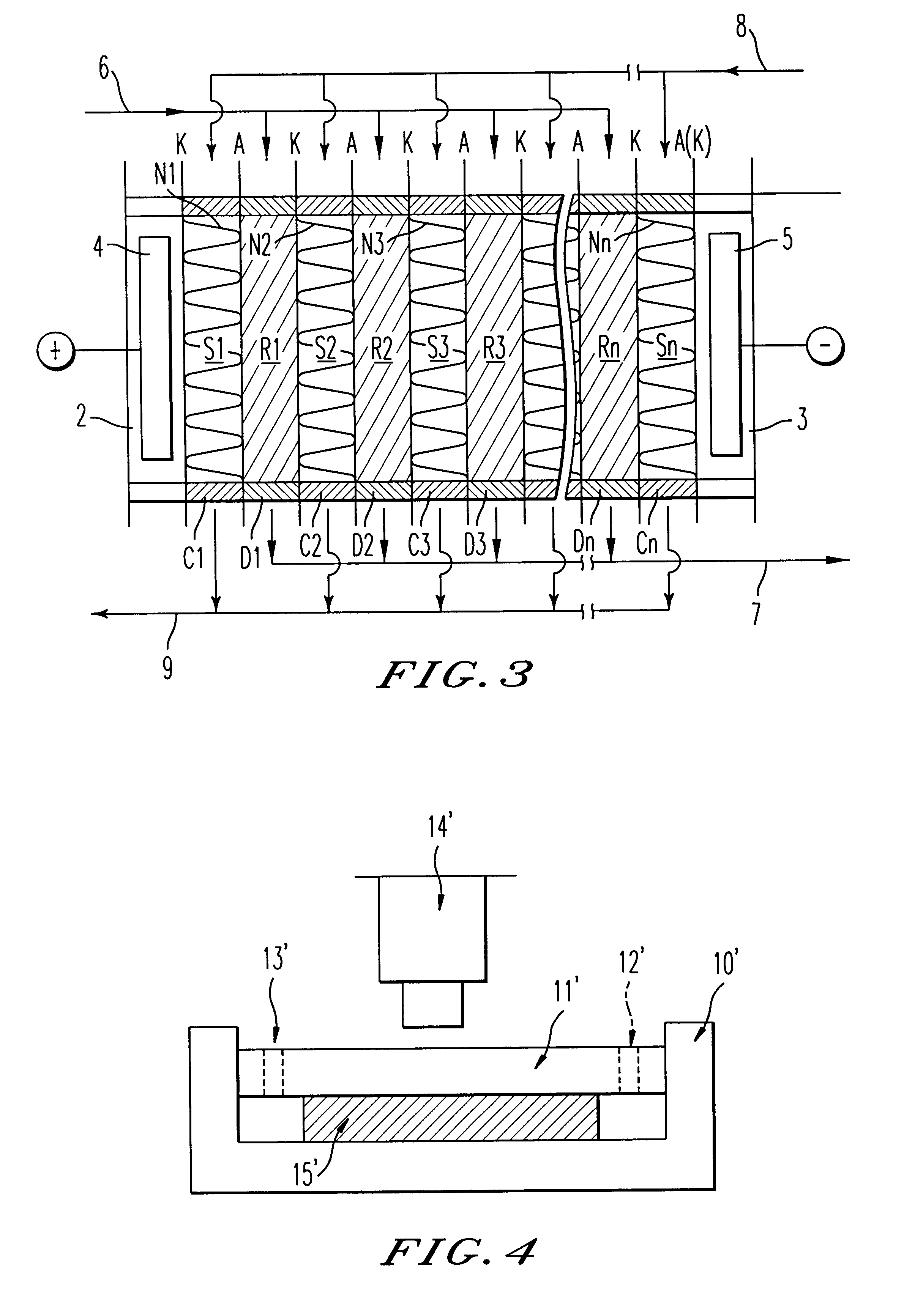Method and apparatus for producing deionized water
a technology of deionized water and apparatus, which is applied in the direction of electrodialysis, water/sewage treatment by ion exchange, refrigeration components, etc., can solve the problems of increasing the effective membrane area, discharge of waste liquid used for regeneration, and increasing the electrical resistance, so as to achieve a small increase in electrical resistance
- Summary
- Abstract
- Description
- Claims
- Application Information
AI Technical Summary
Benefits of technology
Problems solved by technology
Method used
Image
Examples
example 1
A sulfonic acid type (H-type) cation exchange resin having a particle size of from 400 to 600 .mu.m and an ion exchange capacity of 4.5 meq / g dry resin (Diaion SK-1B, tradename, manufactured by Mitsubishi Chemical Corporation) and a quaternary ammonium salt type (OH-type) anion exchange resin having a particle size of from 400 to 600 .mu.m and an ion exchange capacity of 3.5 meq / g dry resin (Diaion SA-10A, tradename, manufactured by Mitsubishi Chemical Corporation) were subjected to hot air drying at a temperature of 50.degree. C. to bring the water content to 8 wt % and then mixed in a ratio of cation exchange resin / anion exchange resin=44 / 56 (weight ratio in a dried state) to obtain a mixture having an ion exchange capacity ratio of 50 / 50. This dried ion exchange resin mixture was packed into each demineralizing compartment of an electrodialyzer wherein the thickness of the demineralizing compartment was 1.2 cm and the thickness of a concentrating compartment having a spacer net m...
example 2
A sodium sulfonate type (Na-type) cation exchange resin having a particle size of from 400 to 600 .mu.m and an ion exchange capacity of 4.5 meq / g dry resin (Diaion SK-1B, tradename, manufactured by Mitsubishi Chemical Corporation) and a quaternary ammonium salt type (Cl-type) a nion exchange resin having a particle size of from 400 to 600 .mu.m and an ion exchange capacity of 3.5 meq / g dry resin (Diaion SA-10A, tradename, manufactured by Mitsubishi Chemical Corporation) were subjected to hot air drying at a temperature of 50.degree. C. to bring the water content to 8 wt % and then mixed in a ratio of cation exchange resin / anion exchange resin=44 / 56 (weight ratio in a dried state) to obtain a mixture having an ion exchange capacity ratio of 50 / 50.
To this mixture, 3 wt % of linear low density polyethylene (Affinity SM-1300, tradename, manufactured by Dow Chemical) was mixed based on the product obtained and kneaded at a temperature of from 120 to 130.degree. C. The obtained kneaded pr...
example 3
A sodium sulfonate type (Na-type) cation exchange resin having a particle size of from 400 to 600 .mu.m and an ion exchange capacity of 4.5 meq / g dry resin (Diaion SK-1B, tradename, manufactured by Mitsubishi Chemical Corporation) and a quaternary ammonium salt type (Cl-type) anion exchange resin having a particle size of from 400 to 600 .mu.m and an ion exchange capacity of 3.5 meq / g dry resin (Diaion SA-10A, tradename, manufactured by Mitsubishi Chemical Corporation) were subjected to hot air drying at a temperature of 50.degree. C. to bring the water content to 8 wt %. To the respective ion exchange resins, 3 wt % of linear low density polyethylene (Affinity SM-1300, tradename, manufactured by Dow Chemical) was mixed based on the product obtained and kneaded at a temperature of from 120 to 130.degree. C. The obtained respective kneaded products were thermally formed by a flat plate press at a temperature of 130.degree. C. to obtain a porous cation exchanger sheet and a porous ani...
PUM
| Property | Measurement | Unit |
|---|---|---|
| Linear density | aaaaa | aaaaa |
| Thickness | aaaaa | aaaaa |
| Auxiliary magnetic field | aaaaa | aaaaa |
Abstract
Description
Claims
Application Information
 Login to View More
Login to View More - R&D
- Intellectual Property
- Life Sciences
- Materials
- Tech Scout
- Unparalleled Data Quality
- Higher Quality Content
- 60% Fewer Hallucinations
Browse by: Latest US Patents, China's latest patents, Technical Efficacy Thesaurus, Application Domain, Technology Topic, Popular Technical Reports.
© 2025 PatSnap. All rights reserved.Legal|Privacy policy|Modern Slavery Act Transparency Statement|Sitemap|About US| Contact US: help@patsnap.com



